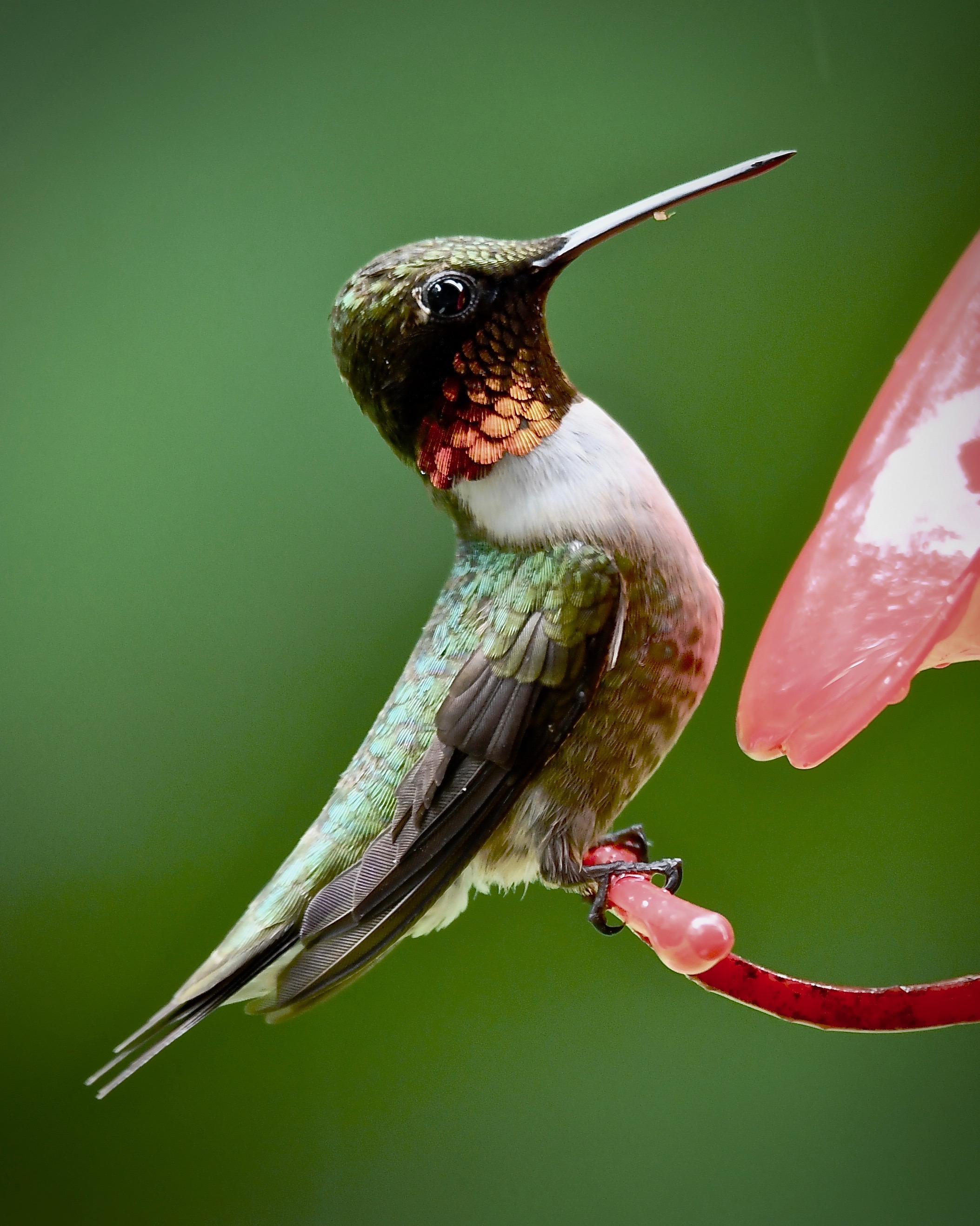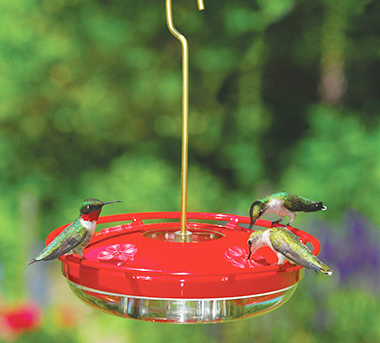Once in a while as I am considering subjects to write about for our blog I run out of inspiration. So, this week I’ve decided to try something different and touch on a number of “odds and ends”. A mixed bag if you will of current bird issues to ornithological vocabulary.
Finches with Eye Disease
We’ve been seeing some evidence of House Finches with an eye disease known as Mycoplasmal conjunctivitis, or House Finch eye disease. And just yesterday a customer inquired about a bird that seemed sick. It did not move away as she approached, as if it was not really aware of her presence. The bird turned out to be a sick House Finch. We had one behind the store the other day that was afflicted with the disease. We hear reports and see evidence of this every year that range from sparse to wide-spread.
Birds infected with House Finch eye disease have red, swollen, runny, or crusty eyes. In extreme cases the eyes become swollen shut and the bird becomes blind. House Finch eye disease is caused by the bacterium Mycoplasma gallisepticum. This bacterium has long been known as a pathogen of domestic turkeys and chickens, but it has been observed in House Finches since 1994. The disease has affected several other species, including American Goldfinch, Evening Grosbeak, and Purple Finch
You might observe an infected bird sitting quietly in your yard, clumsily scratching an eye against its foot or a perch. While some infected birds recover, many die from starvation, exposure, or predation. If you’re a songbird it’s impossible to survive if you can’t see.
When birds are concentrated in a small area like at a birdfeeder the risk of a disease spreading within that population increases.
What To Do
If you detect a sick finch at your feeders the standard procedure is to take down your feeders for a few days to a week and give them a very thorough cleaning. Cleaning your feeders is always a good idea and is recommended it be done on a regular basis. Clorox wipes are very handy to give your feeder a quick clean particularly around the feeding ports.
Altricial vs Precocial
Almost all of us have seen baby songbirds in a nest. We know they are completely dependent on the adults to keep them warm as they are featherless for the first few days and to bring them food while in the nest developing. They are completely helpless and mostly immobile. And the adults continue to feed them for weeks even after they have fledged. This is referred to as altricial. Altricial birds include herons, hawks, owls, and most songbirds.
Precocial means young are capable of a high degree of independent activity immediately after hatching. Precocial young typically can move about, have their eyes open and will be covered in down at hatching. They are generally able to walk away from the nest as soon as they have dried off. They will also begin searching for their own food. Examples of precocial birds include most duck species, Wild Turkey, Quail, Killdeer and Canada geese.
Have you seen them? I’ve seen several in the past few weeks. I’m referring to bald cardinals.
In mid to late summer it’s not uncommon to see Northern Cardinals, and sometimes, Blue jays, completely void of head feathers. This odd appearance can sometimes be attributed to the summer molt, or more likely from feather mites.
Most bald-headed-bird reports occur in summer and fall, which are typical molting times. According to the Cornell Lab of Ornithology many of these strange-looking birds may be juveniles undergoing their first pre-basic molt, which produces the first winter adult plumage. For some unknown reason, the bald birds may have dropped all of their head feathers at once. Staggered feather loss and replacement is the normal pattern.
It is possible that the baldness is caused by feather mites, or lice. A mite infection is the likely explanation for the loss of head feathers only. After all, the head is the one place a bird would not be able to preen effectively to control mites. Feather mites are tiny arthropods, whose feeding destroys feather shafts. This is not a condition the affected bird will not recover from.
But why does it seem to affect primarily Cardinals and Blue jays? Do other songbirds have effective methods of removing these parasites from their heads? We’re just not sure.
Interesting Behaviors of Birds
Wood Thrush Shop employee, Eli Haislip, recently photographed an adult Red-bellied woodpecker feeding a juvenile Northern Flicker. Over the course of a few days he witnessed the Flicker following the Red-bellied woodpecker and begging for food. So, is this an example of hybridization, where two different but compatible species mate, or an example of a Flicker laying an egg in the Red-bellied’s nest? I looked for information regarding hybridization among songbirds and there are examples ranging from rare to common. Some examples of common hybridization include Baltimore and Bullock’s Oriole and Indigo Bunting and Lazuli Bunting. Examples of rare hybridization include Blue jay and Stellar’s jay and Eastern Bluebird and Mountain Bluebird. This juvenile seems to possess all the field marks of a Northern Flicker and none of the Red-bellied woodpecker but we may just have to settle for uncertainty.
Adaptable Bluebirds
I’ve always tried to point out to people that Eastern Bluebirds are not nearly as choosy about nest-sites as they have been portrayed. If Bluebirds really needed such specifics in the location of a nest-site they probably would have been extinct by now. And there’s nothing natural about a birdhouse but they, as well as other species, have adapted to using them because they “represent” something they would find in nature. I have seen Bluebird nests in large horizontal pipes, a hole in a basketball goal pole, and even in a stack of cement foundation blocks. But a new one was presented to me by a customer recently. A pair of Bluebirds used the abandoned nest of a Robin, Phoebe, or Barn Swallow. It was hard to see detail in the picture but the nest was built of mud and plant material on a ledge against the wall of the house under an eve. The Bluebirds raised an undetermined number of young in this nest.
















